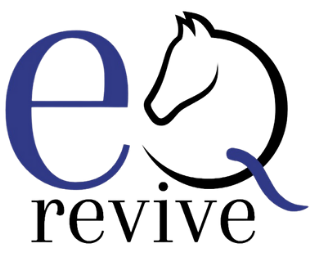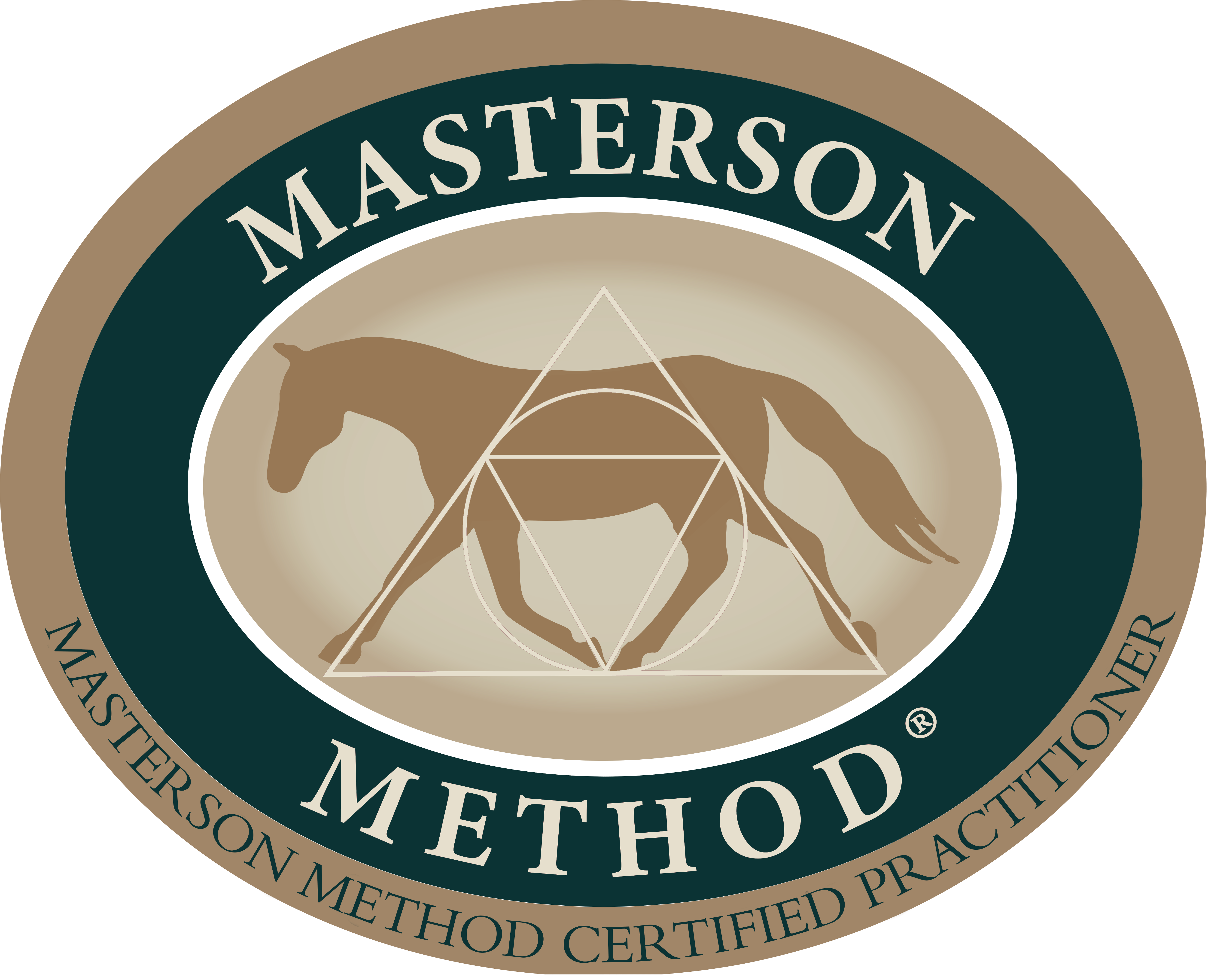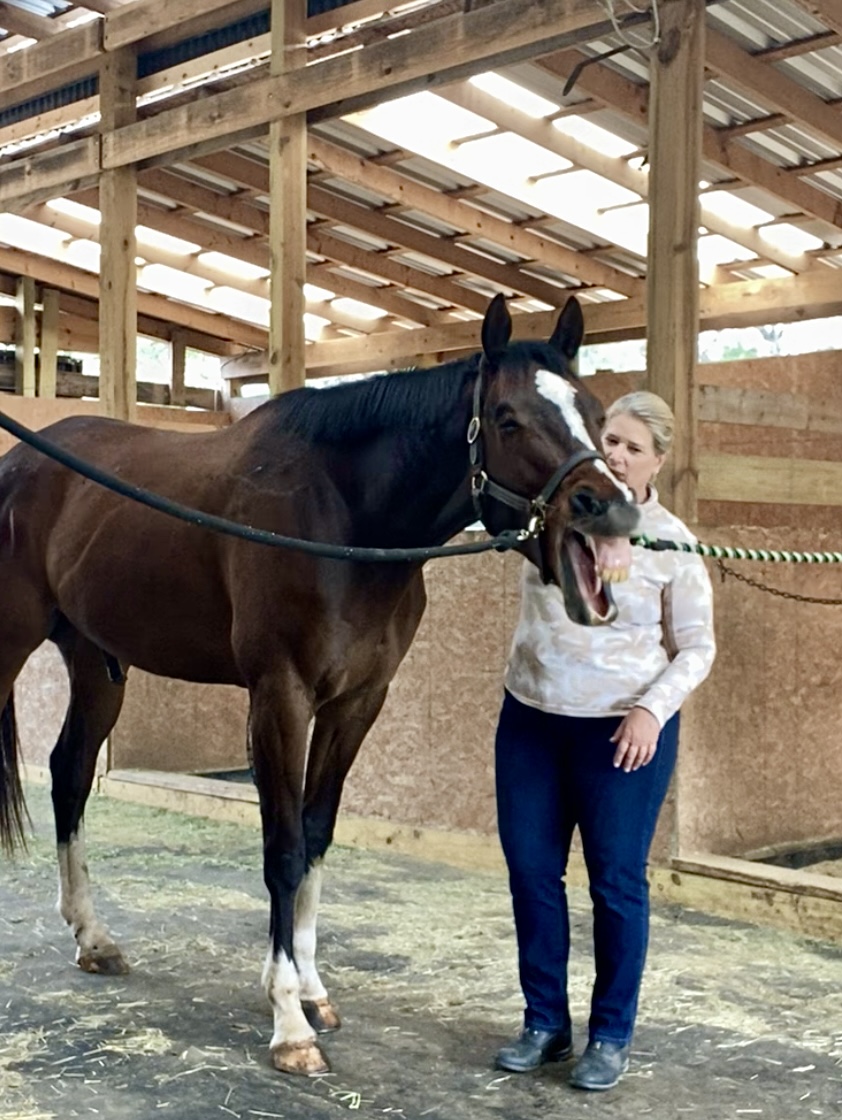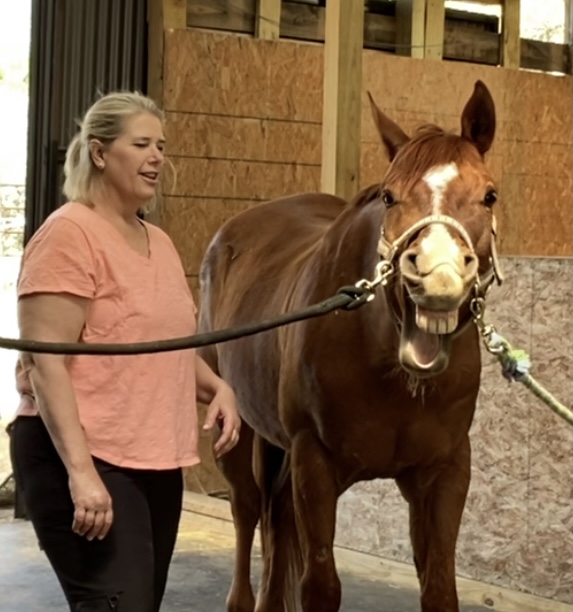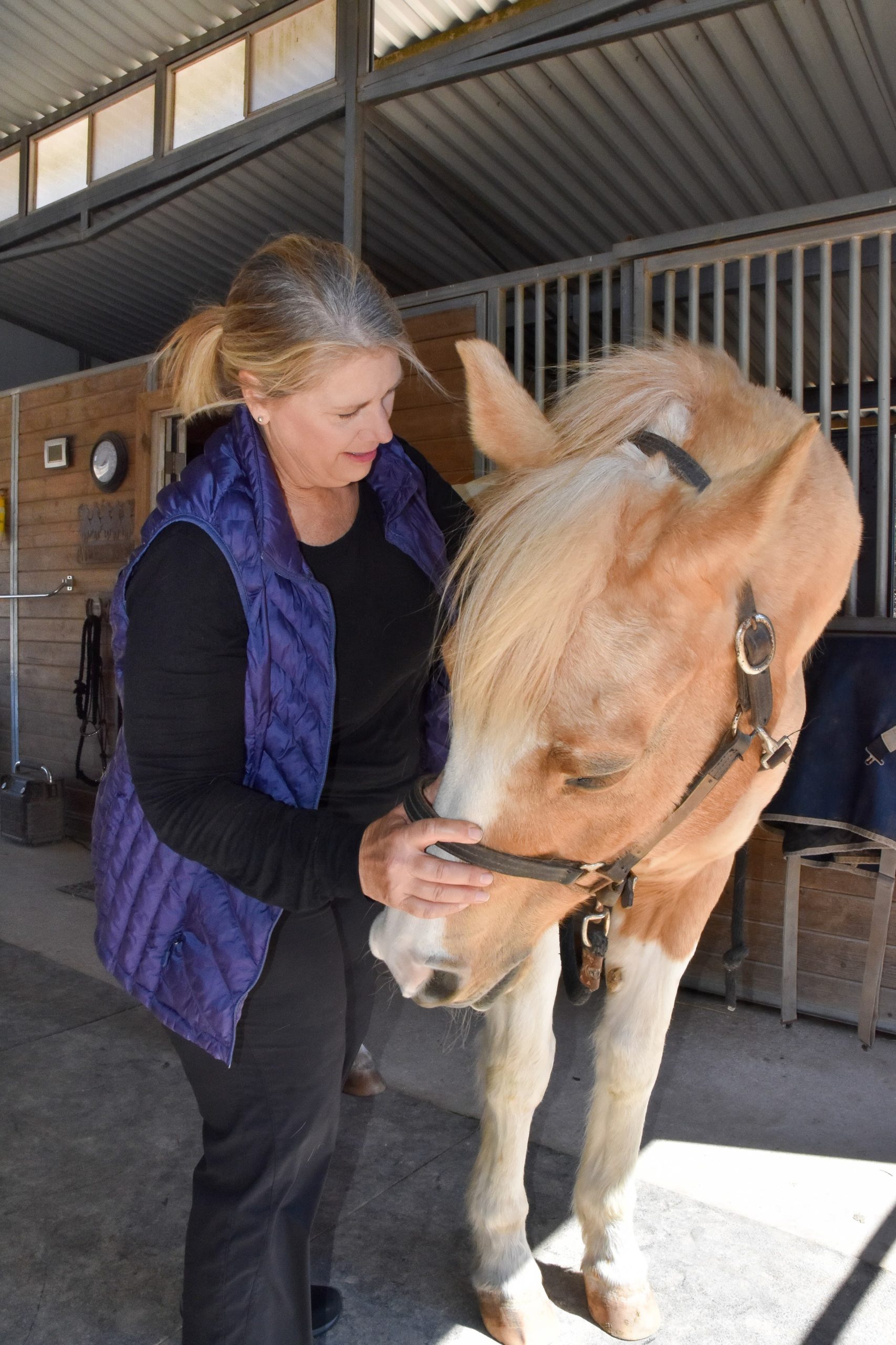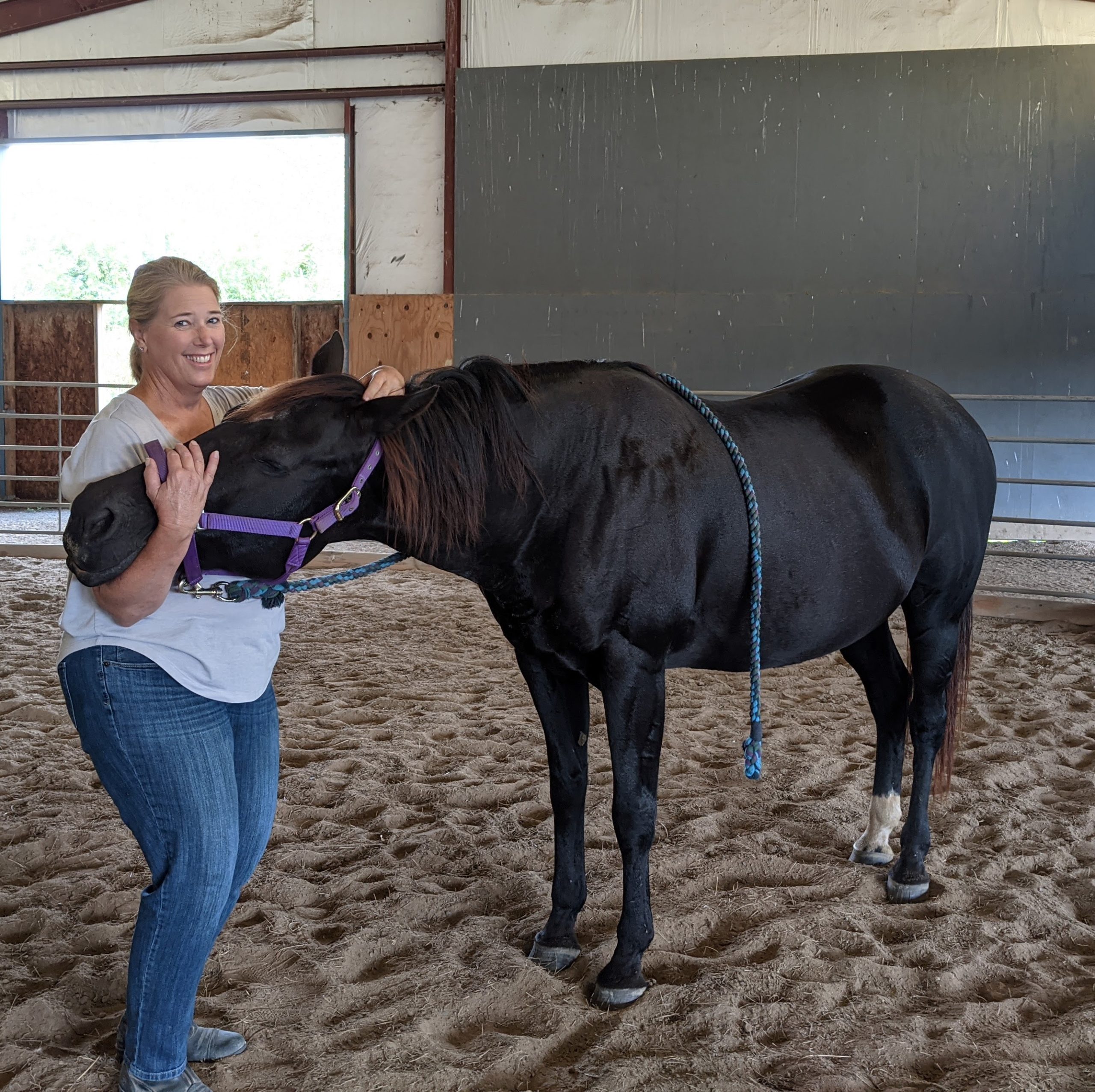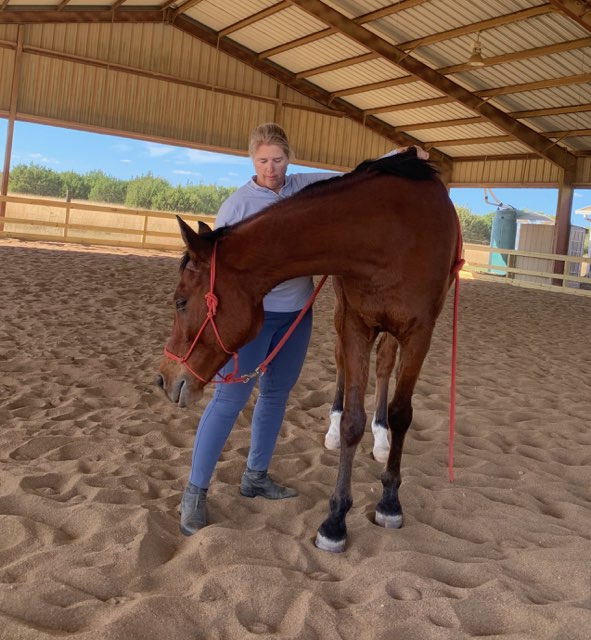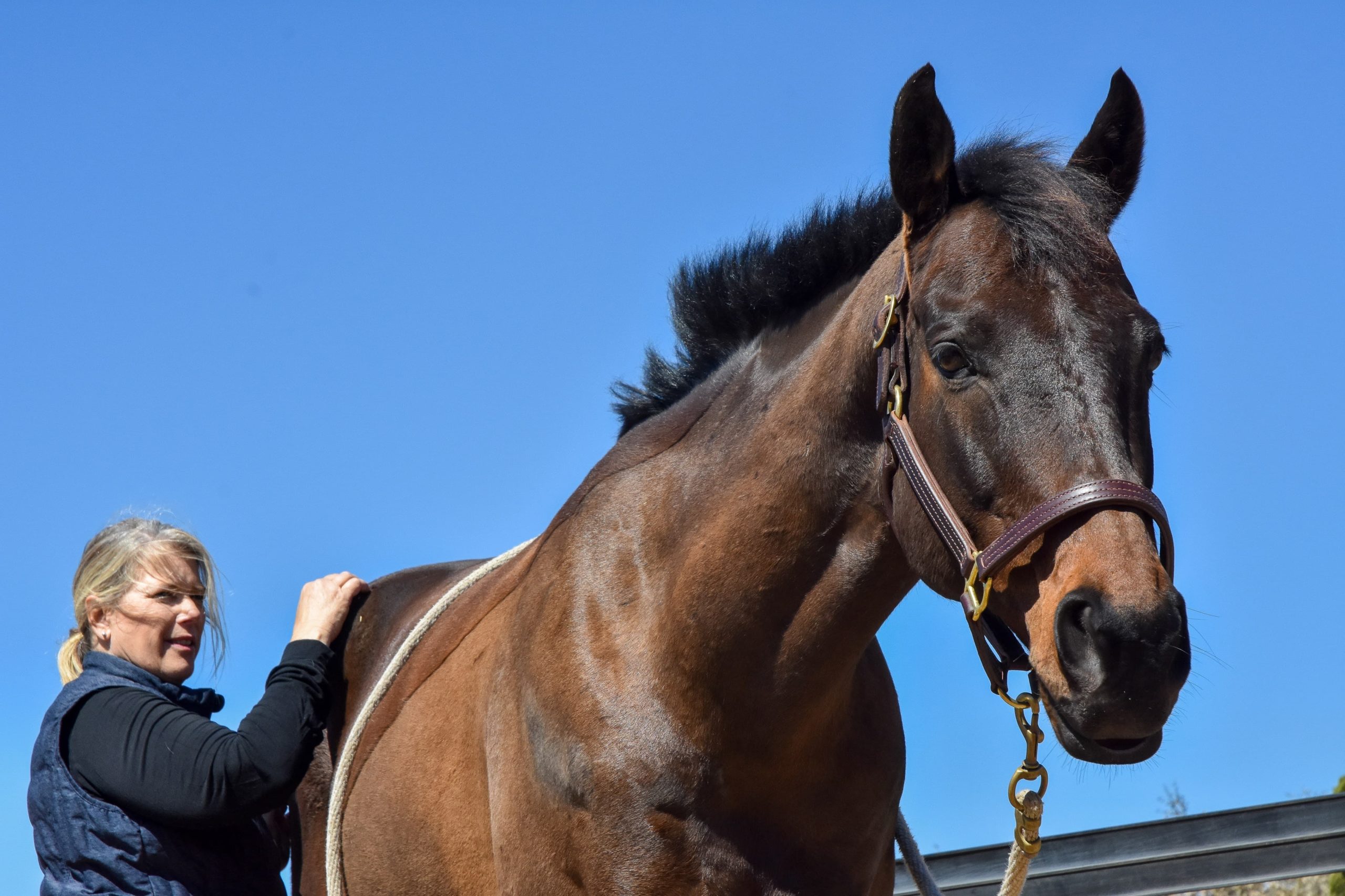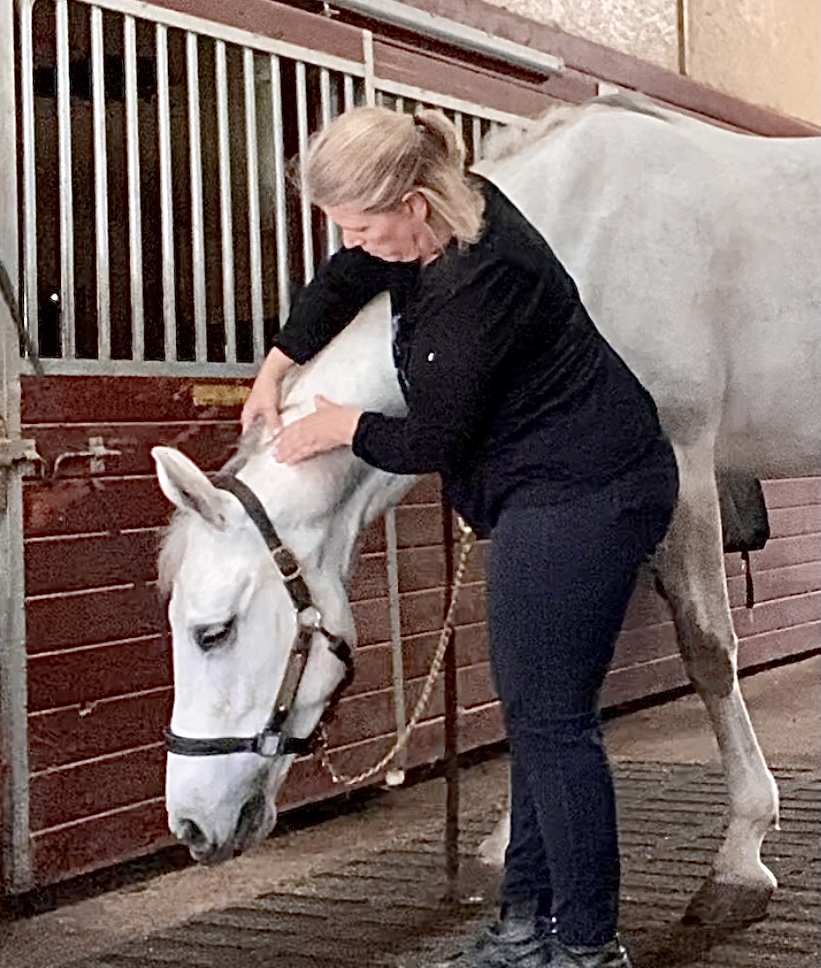INTEGRATED PERFORMANCE BODYWORK
EQrevive is your partner to help uncover and address tension in key junctions of your horse's body that affect comfort, movement, and performance. Specializing in The Masterson Method® Integrated Performance Bodywork, we use light-touch techniques and gentle movement, tuning in to subtle response cues from your horse to direct the flow and location of work to maximize results.
Meet Sarah, MMCP
I am a lifelong horse person, inheriting the obsession from my grandmother and father. In the saddle at 2 years old, over time I have been active in hunters, dressage, ranch riding, competitive trail, and currently, eventing. Prior to my journey into equine bodywork, I was fortunate to be involved in the horse community in many different areas, as a rider & competitor, a developing executive with Ariat® boots, a local and regional leader in the United States Pony Clubs, and (my most difficult role!) a mom cheering from the rail. I have a passion to help humans and horses connect and grow together, and especially enjoy exploring new approaches and innovative products.
It was through Pony Club that I saw my first demonstration of The Masterson Method® and was drawn in completely. This unique form of bodywork presented the perfect avenue to greatly improve the health, comfort & well-being of so many horses and their people. I combine my Masterson training with a wide range of continued professional education including anatomy, biomechanics, nutrition, farriery, saddle fit, and stable management. I believe strongly in taking a “whole horse” approach to help owners determine possible primary issues that may be behind their horse’s discomfort or diminished performance. I enjoy working with all horses, whether competitive athletes or pets, with a soft spot for the off-the-track Thoroughbred, and supporting their transition from racing life.
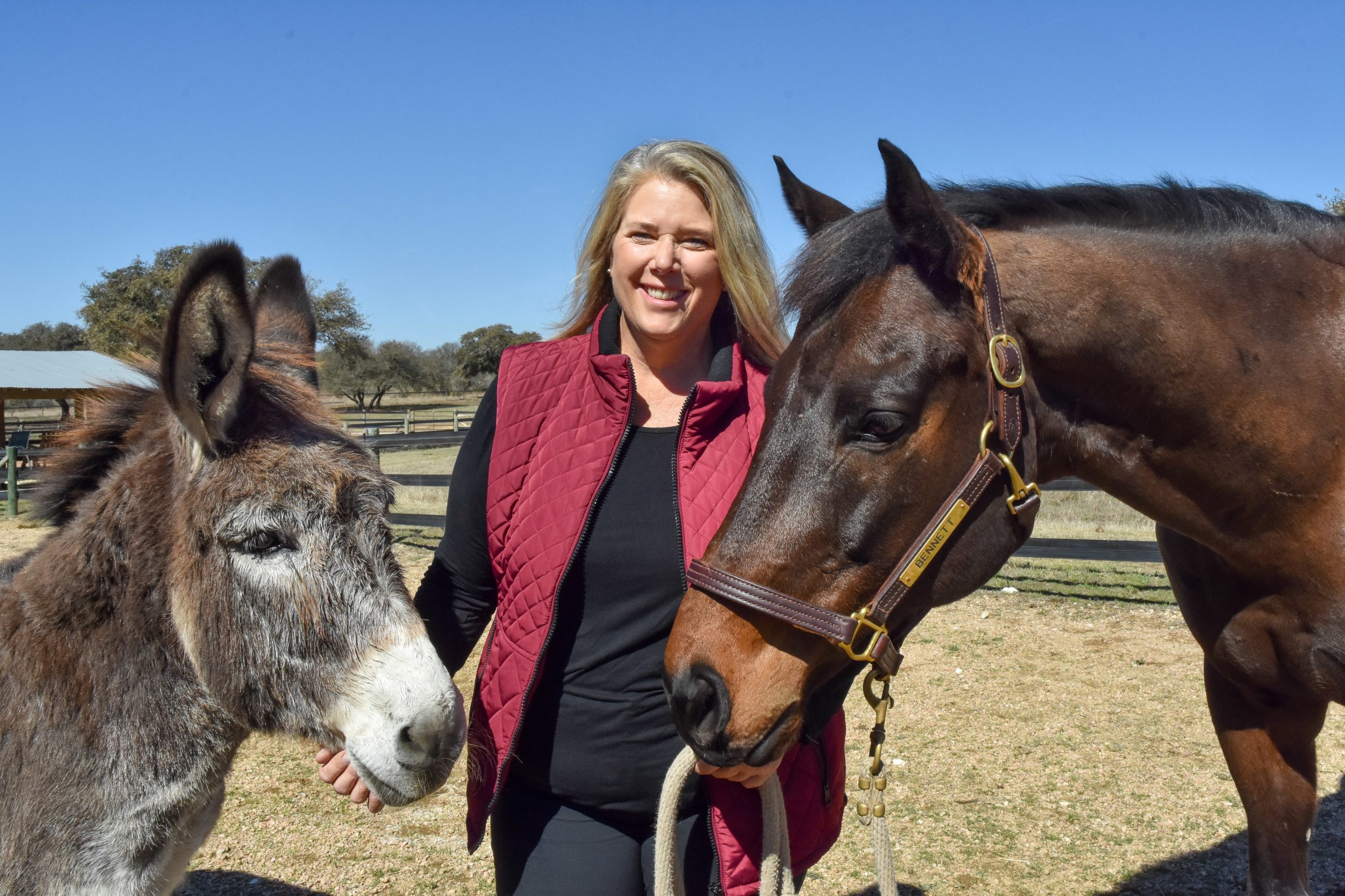
Masterson Method®
Integrated Equine Performance Bodywork
ALL horses can benefit from bodywork due to the tremendous effect it has on muscle health, blood flow, range of motion and enhanced well-being. Bodywork is also instrumental in:
- Relief of muscle tension and entrenched compensation patterns from past injuries, poorly fitted tack or rider imbalance
- Reduced risk of injury or the proper recovery from one
- Resolution of “training issues” that may well be pain-induced compensations
** Bodywork is not a substitute for veterinary care, which must always come first. Horses in the acute phase of an injury should not have bodywork unless specifically advised by their veterinarian, and any horse in the recovery phase of an injury must have a veterinary referral.
